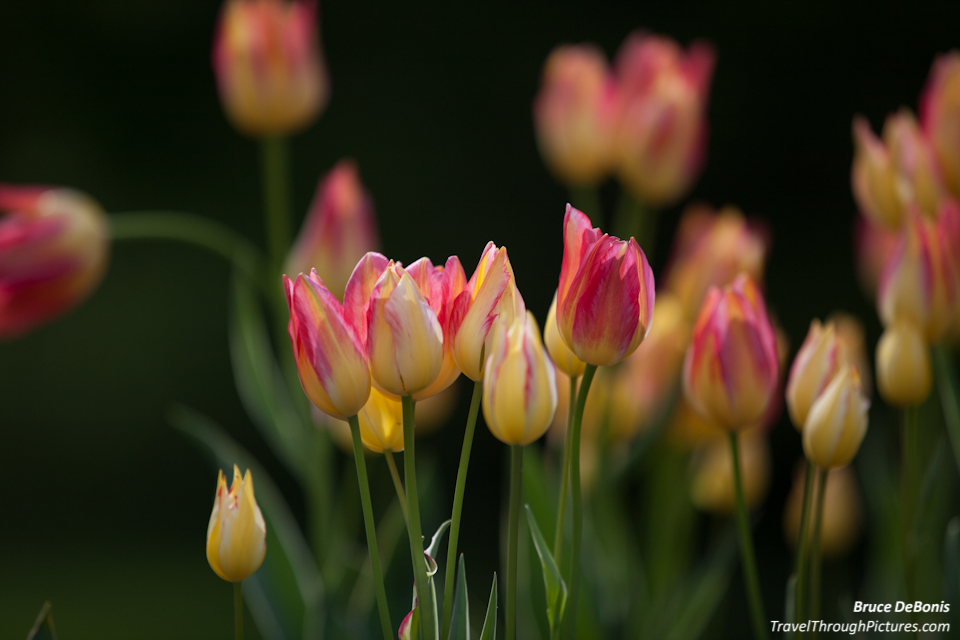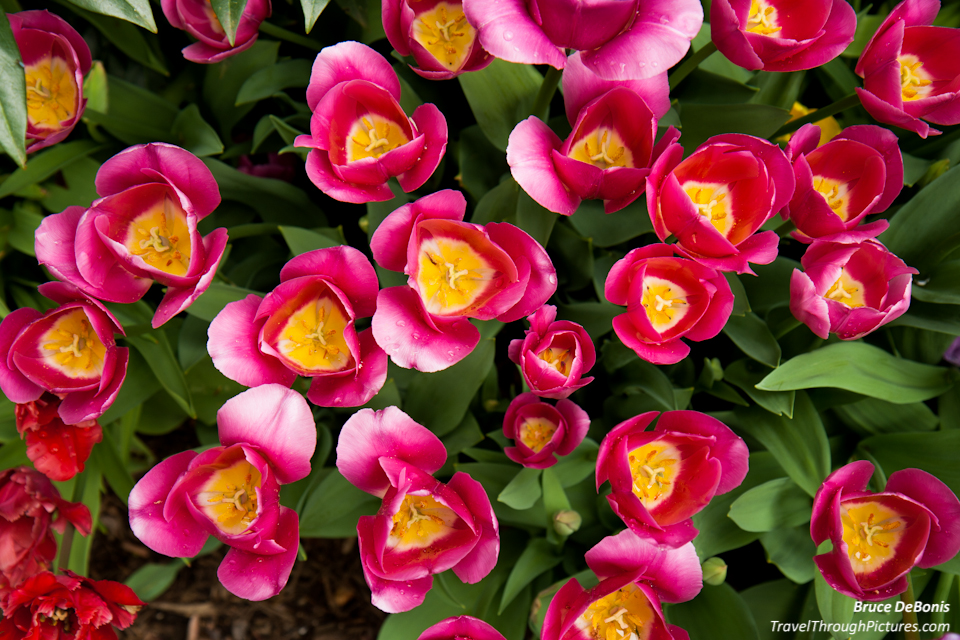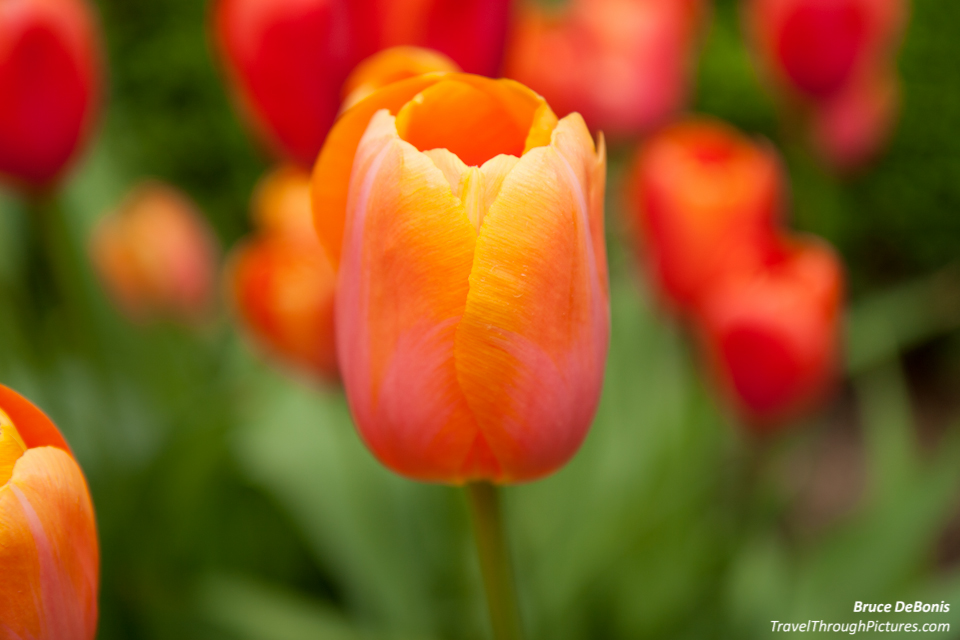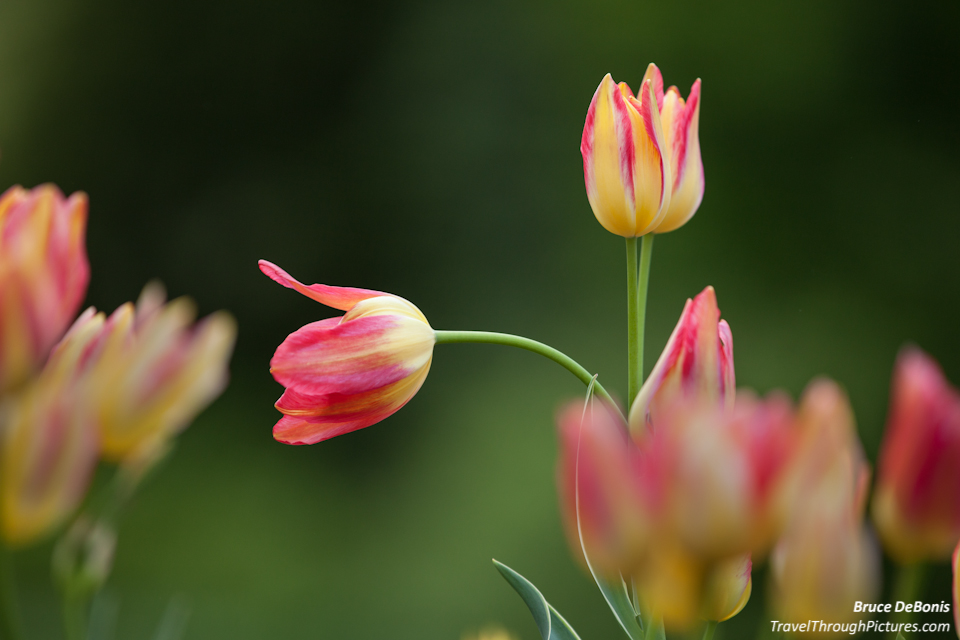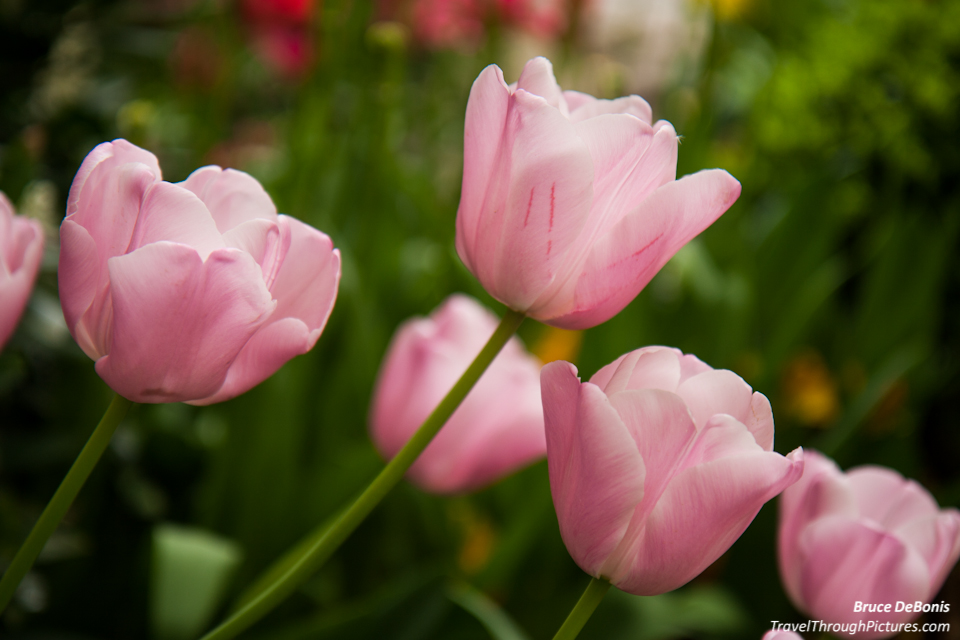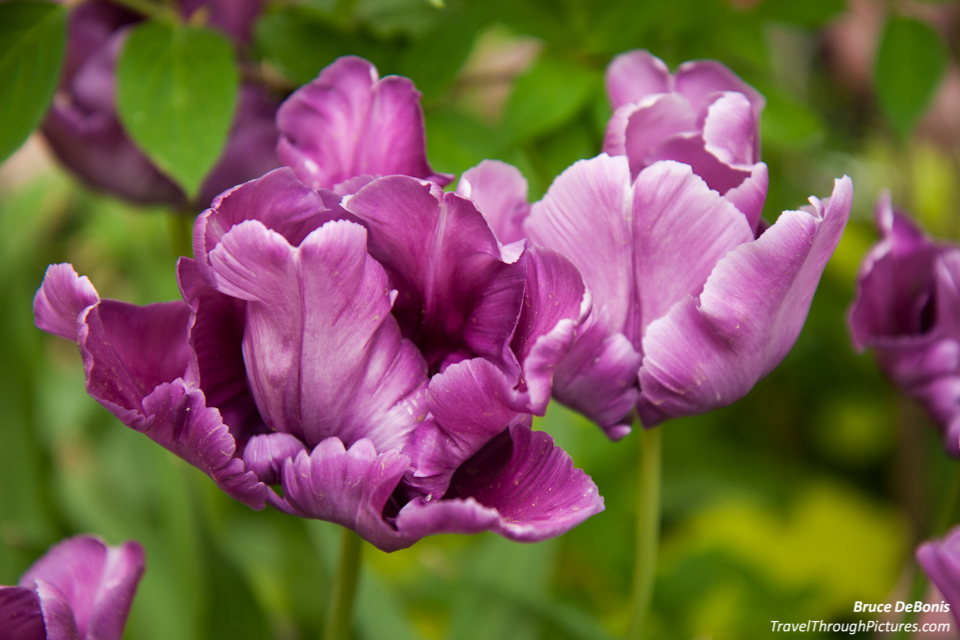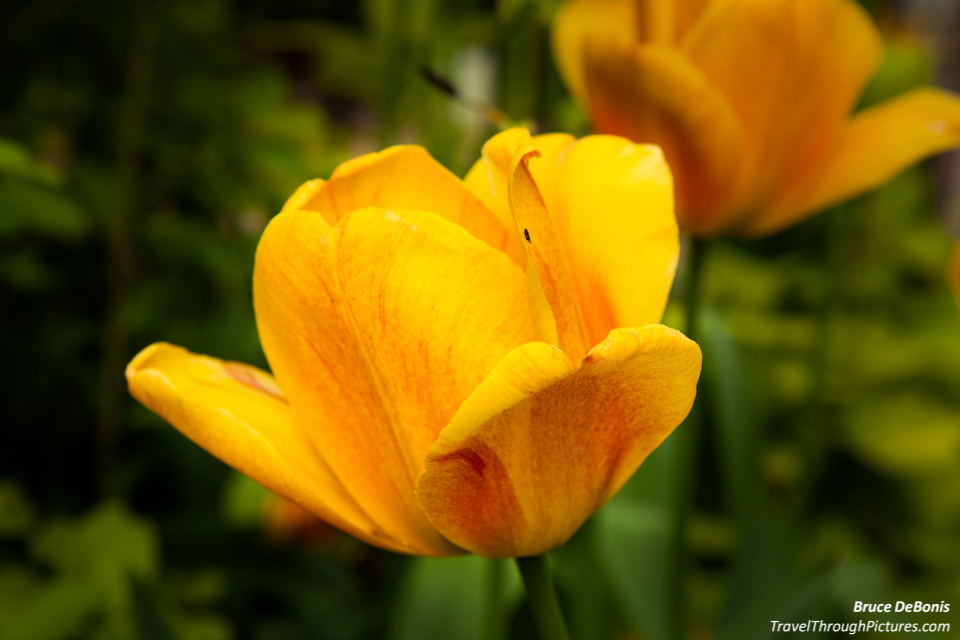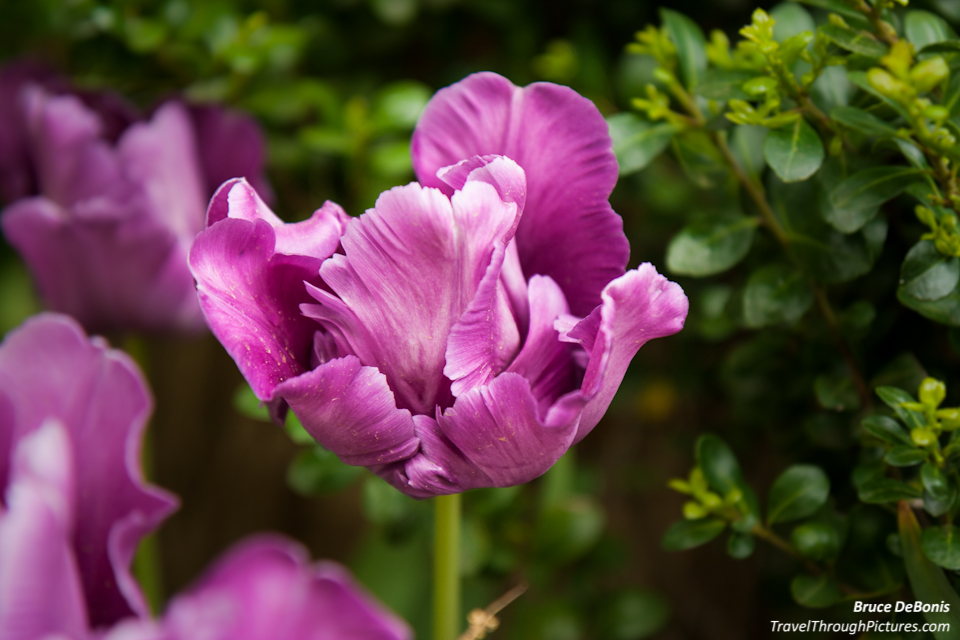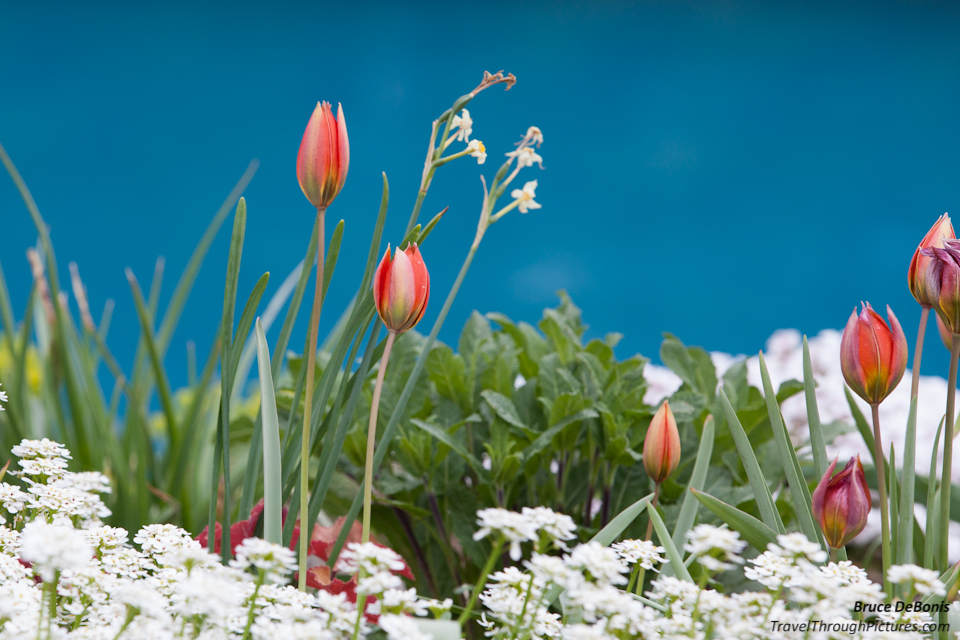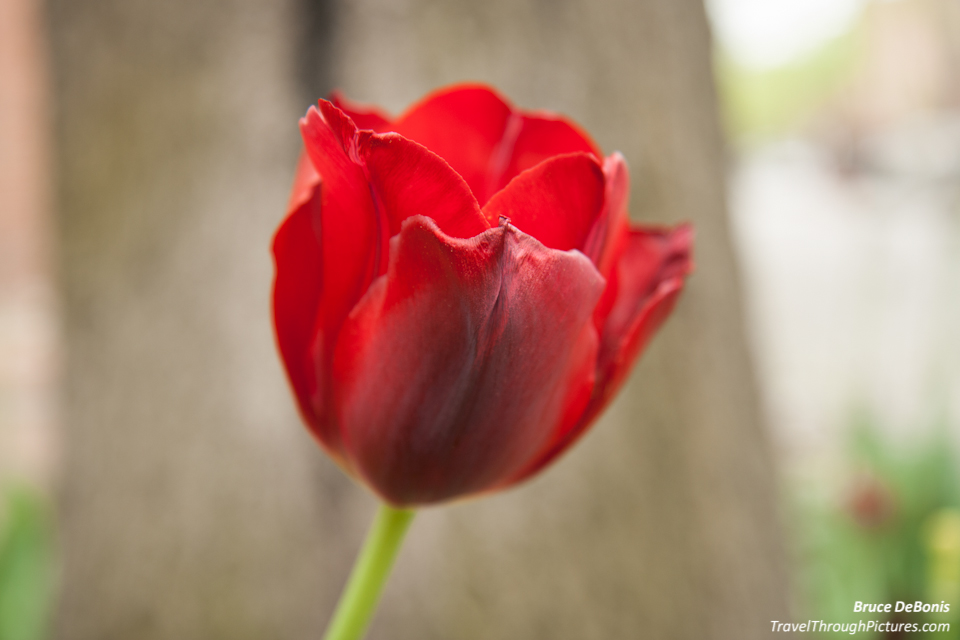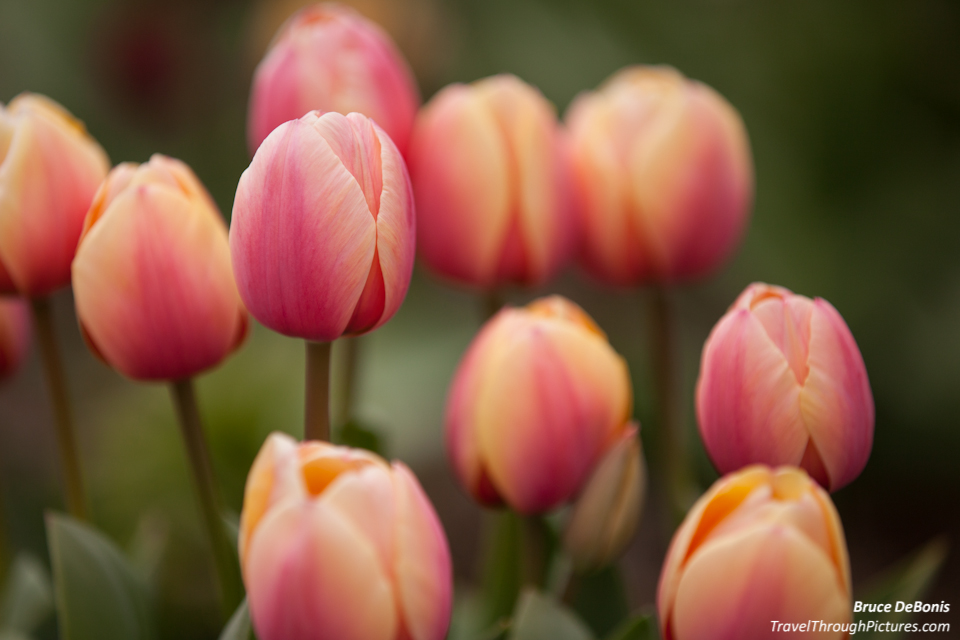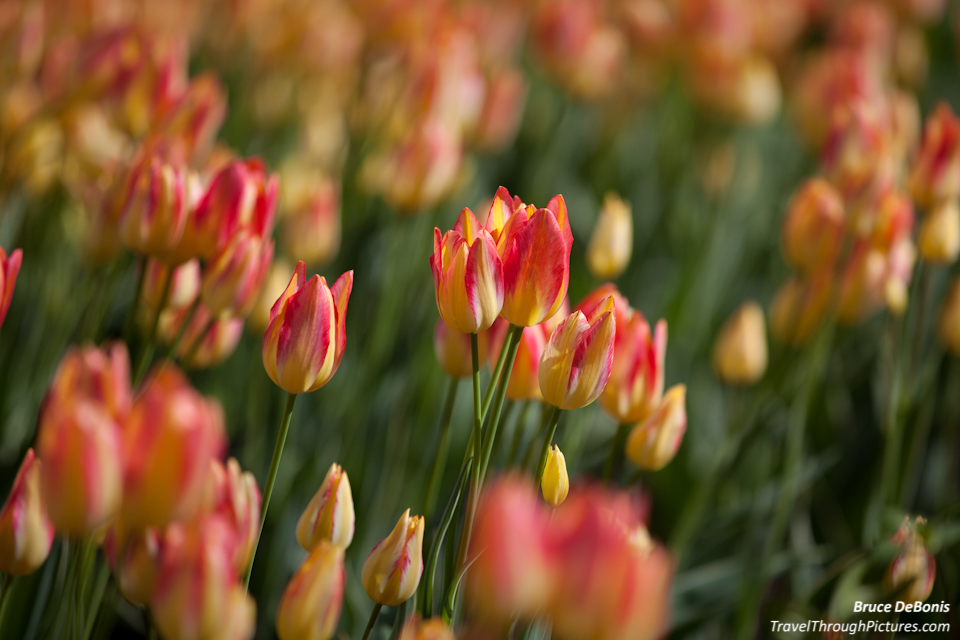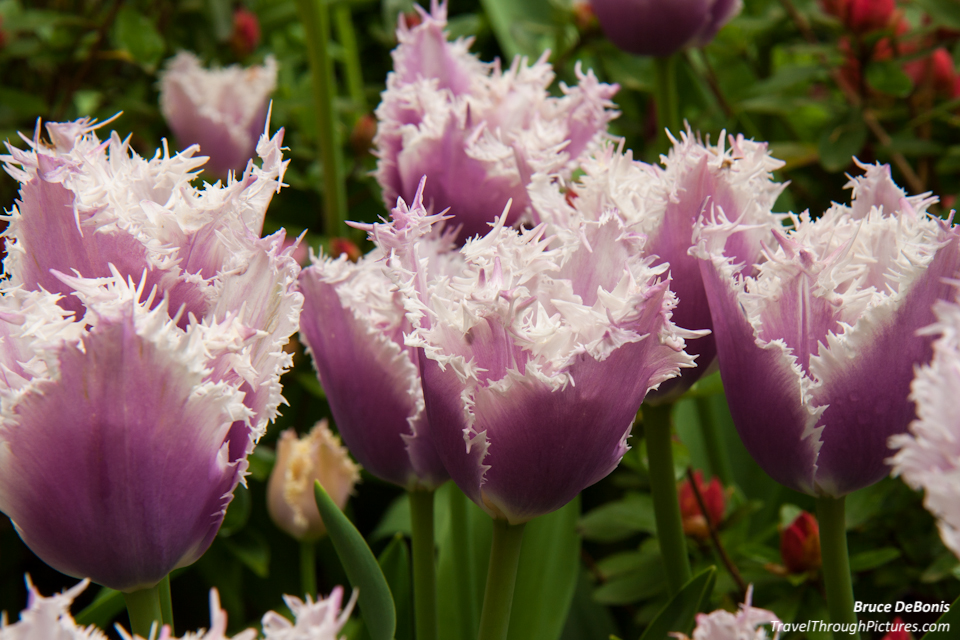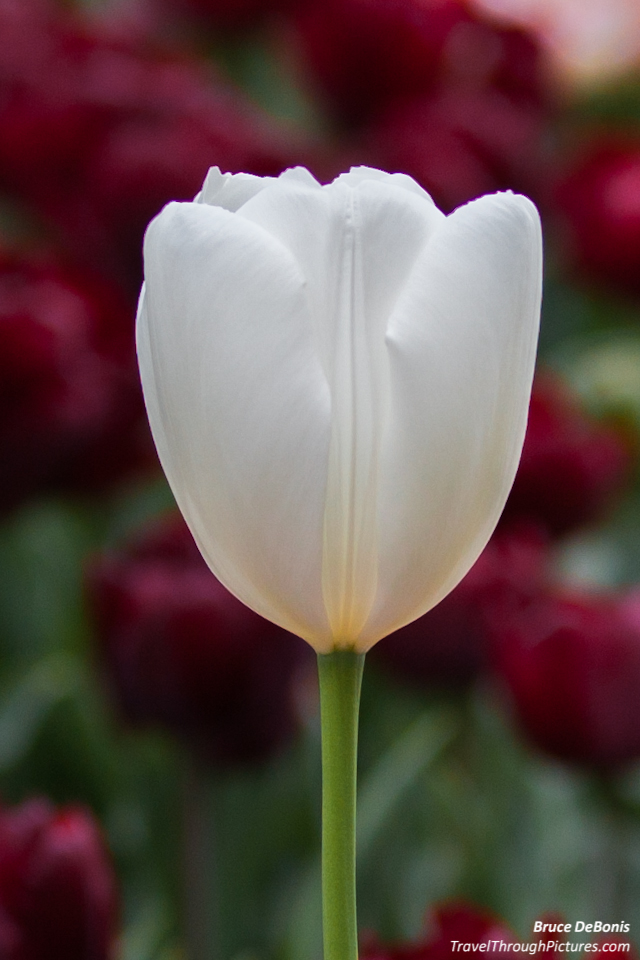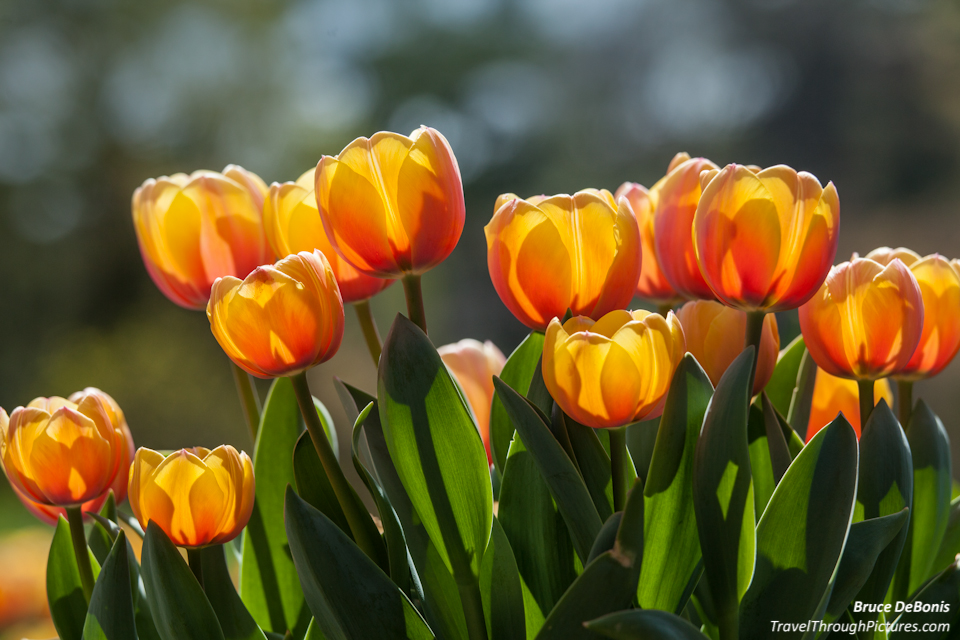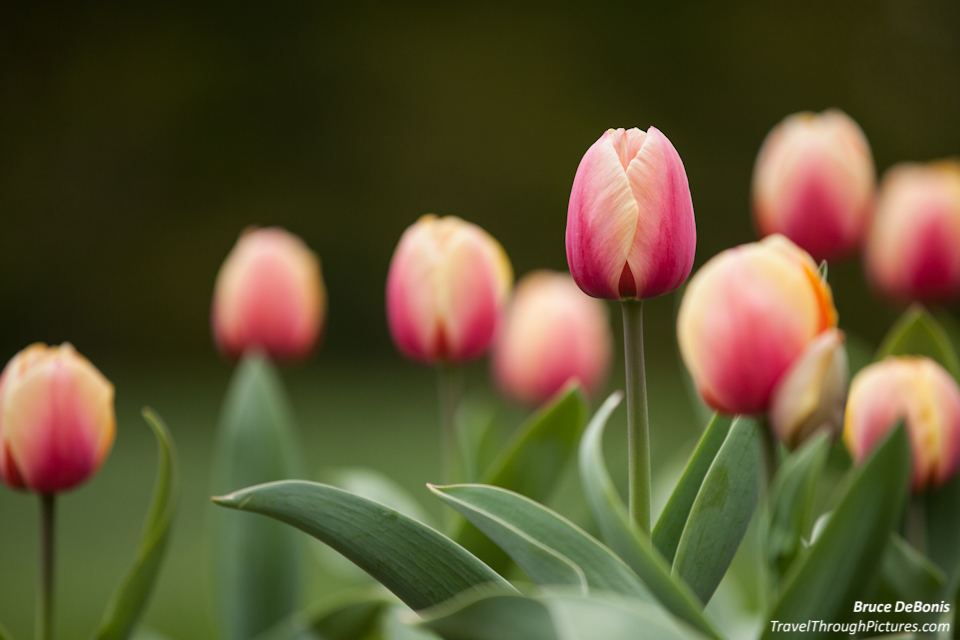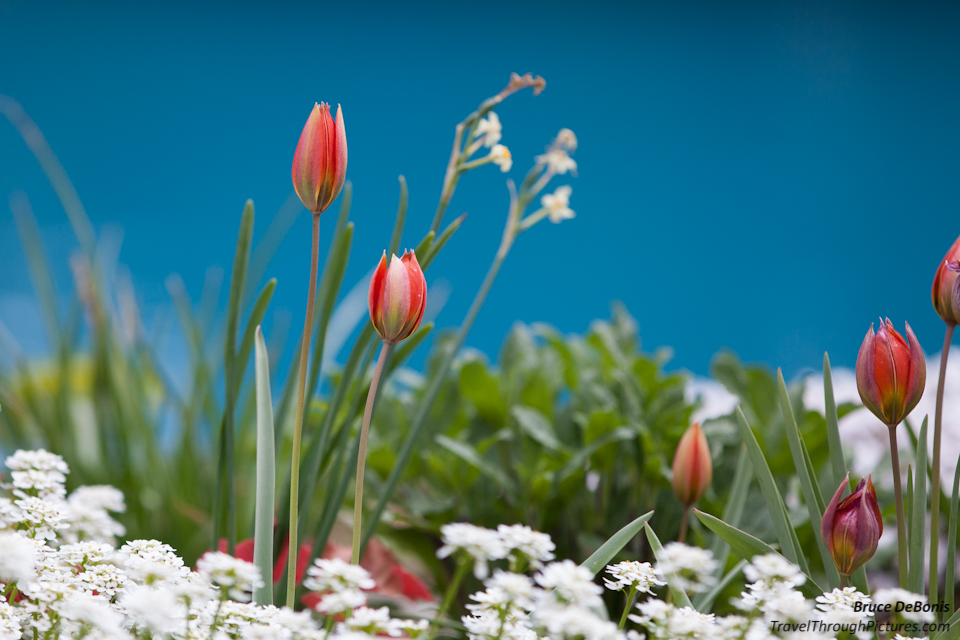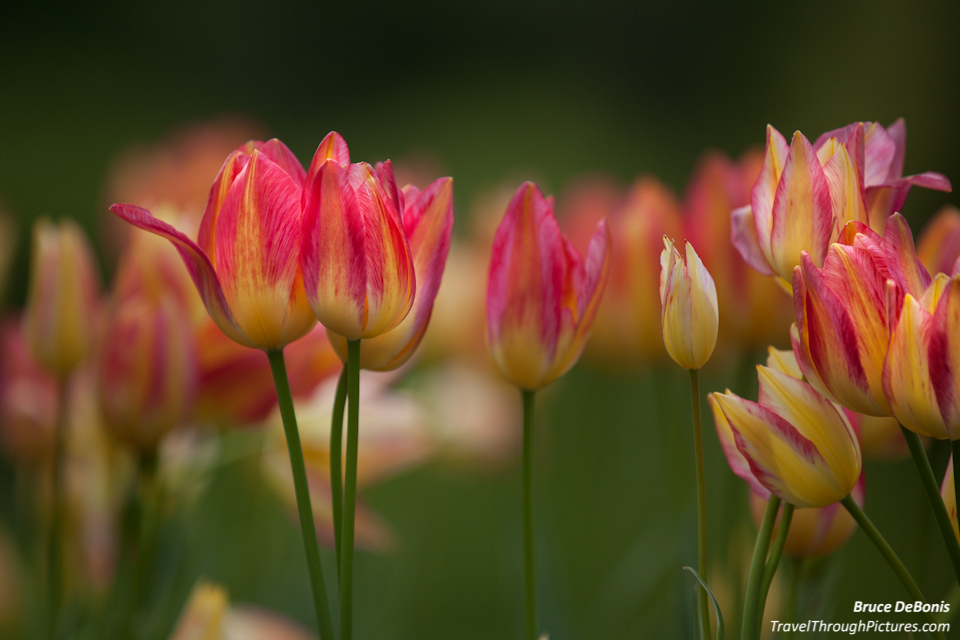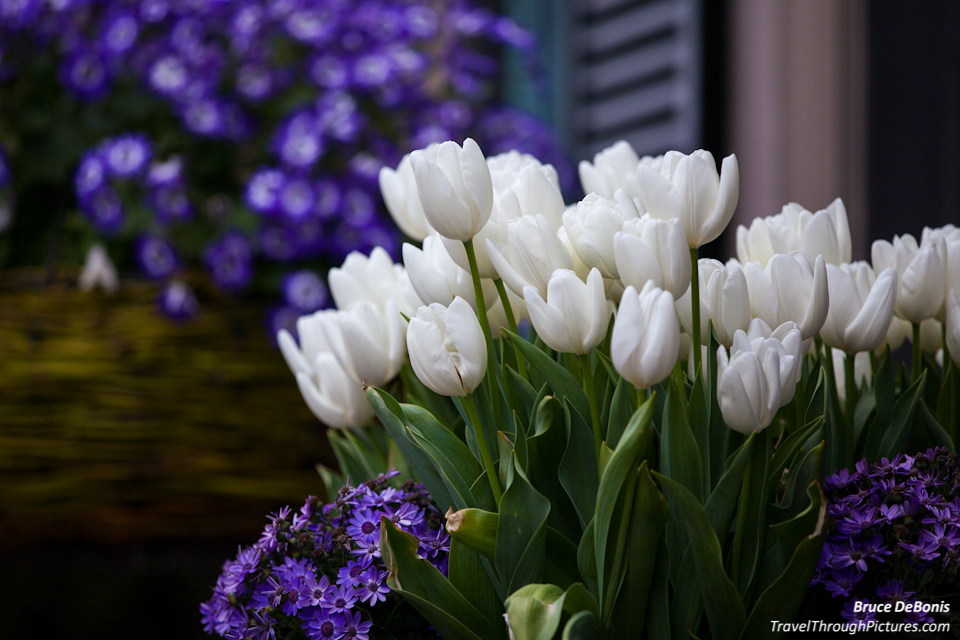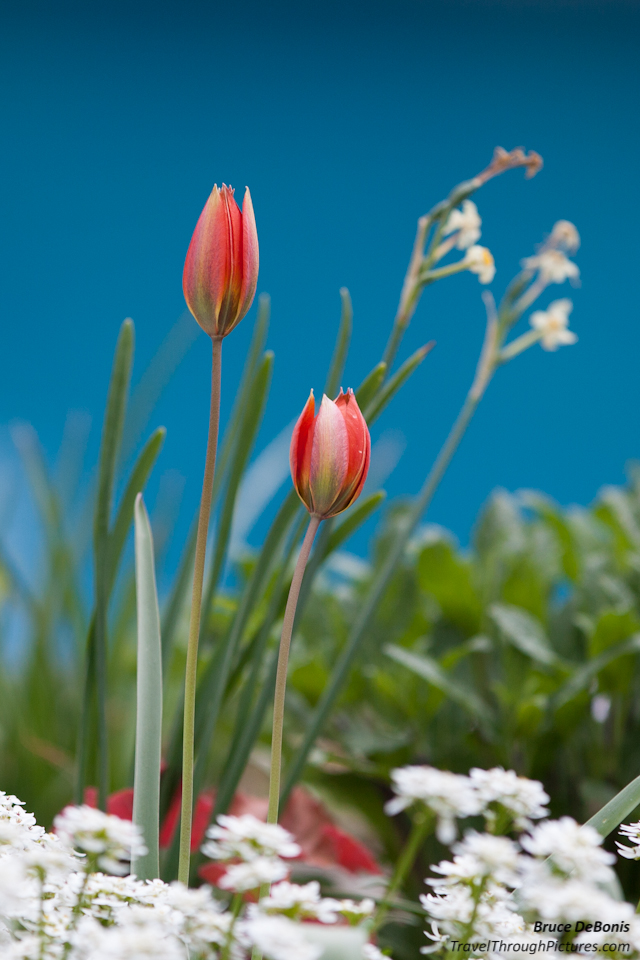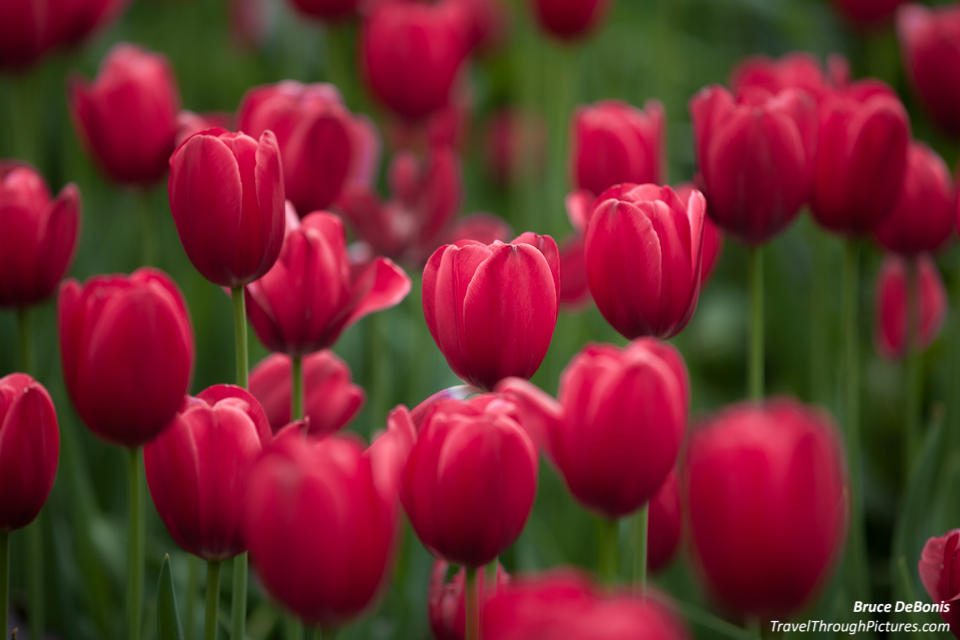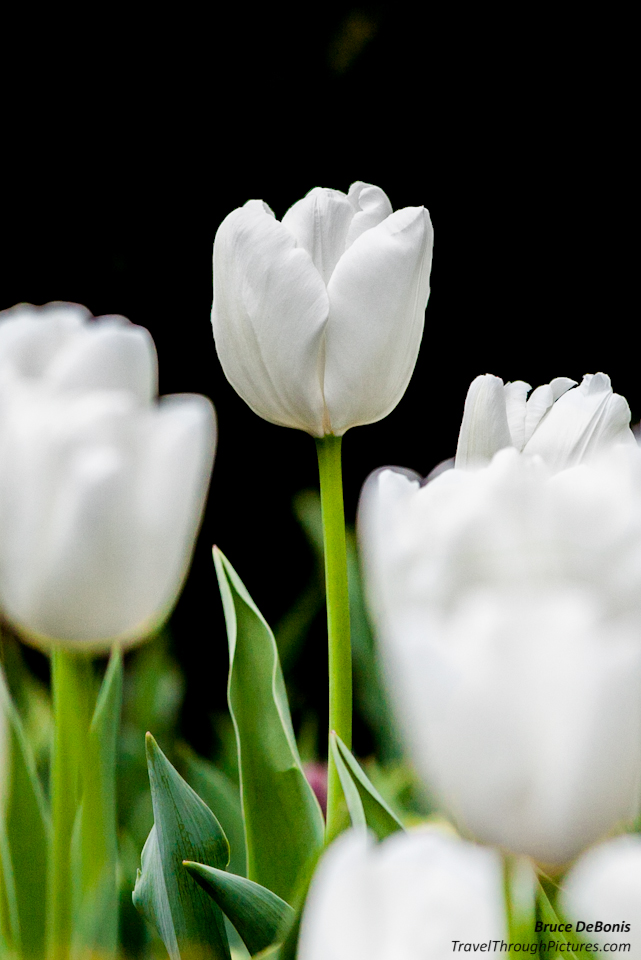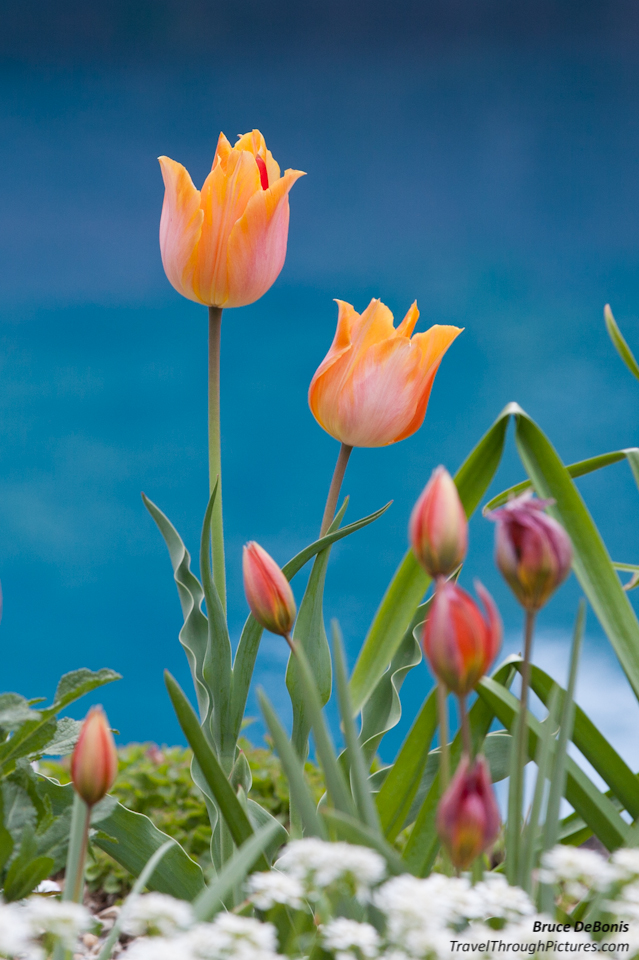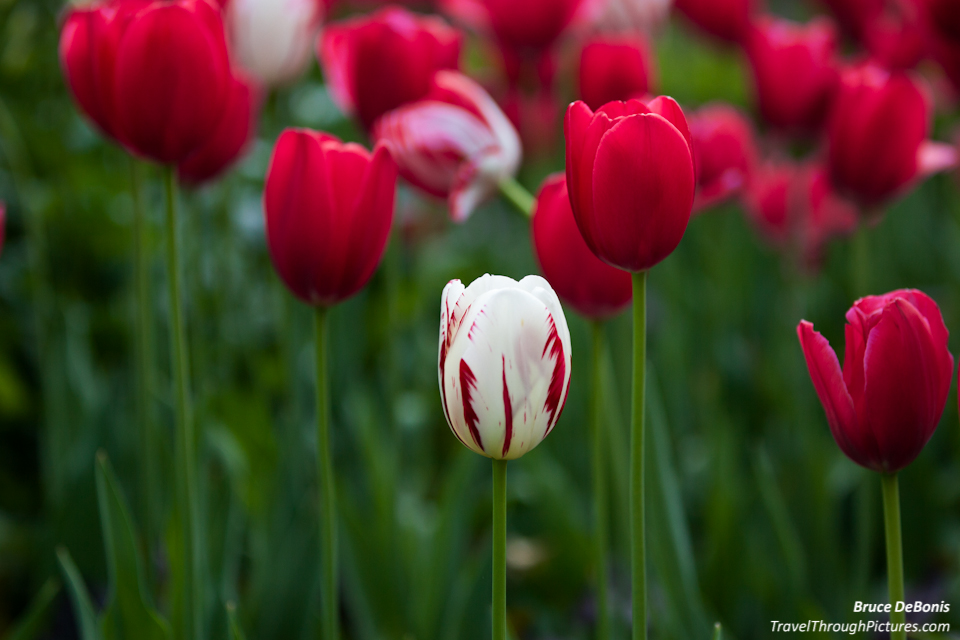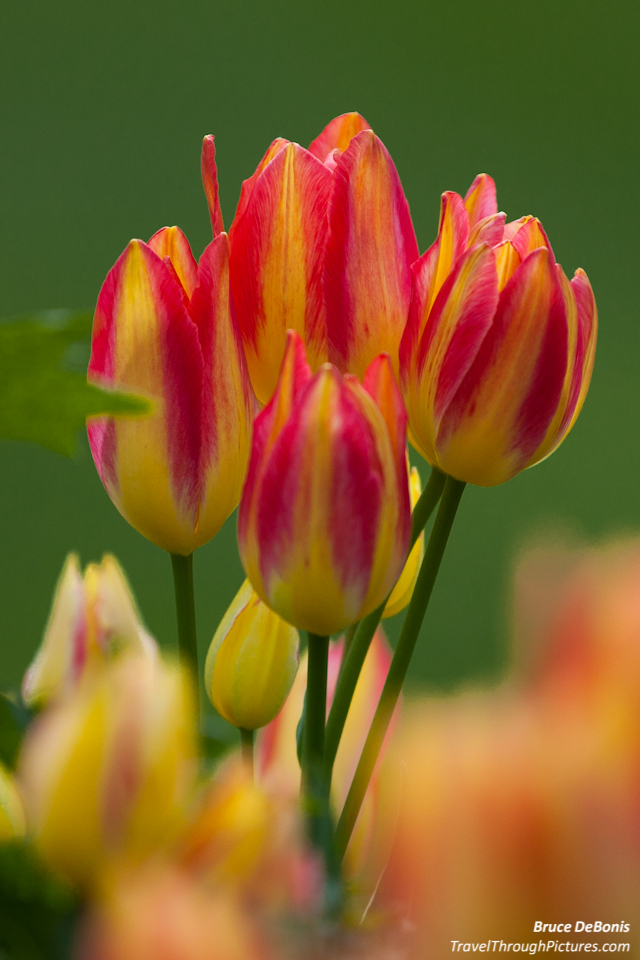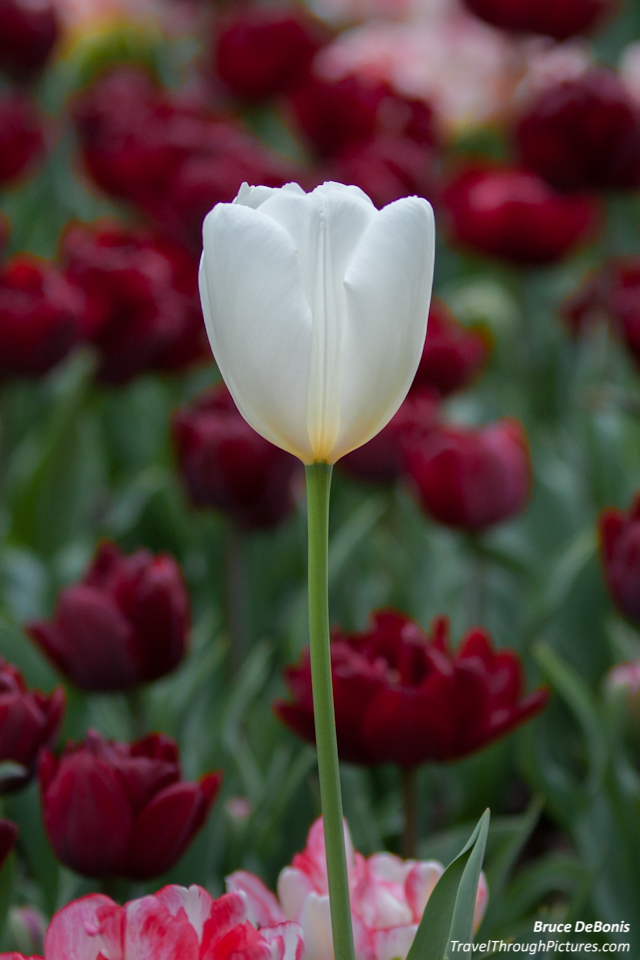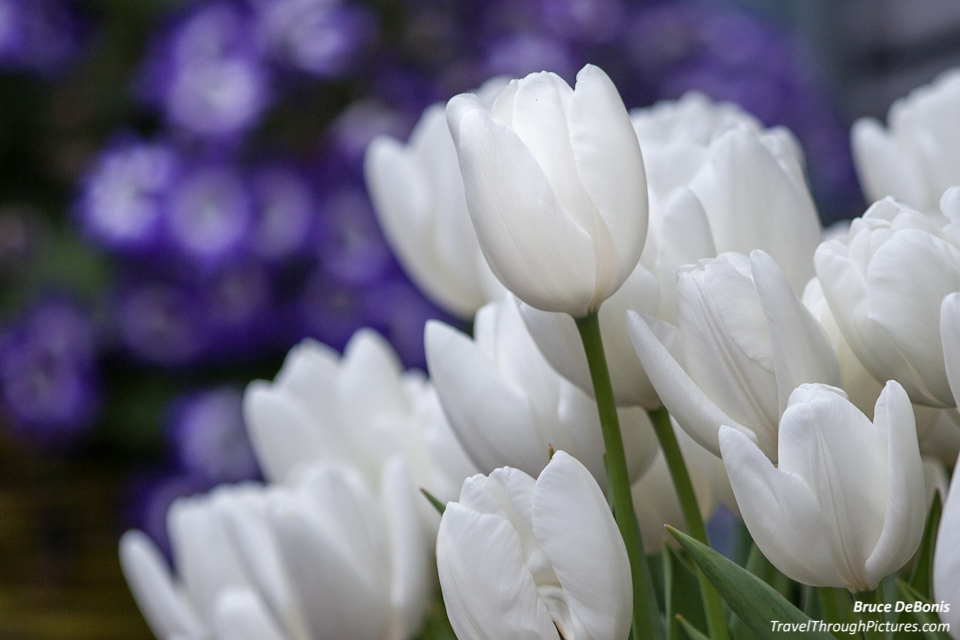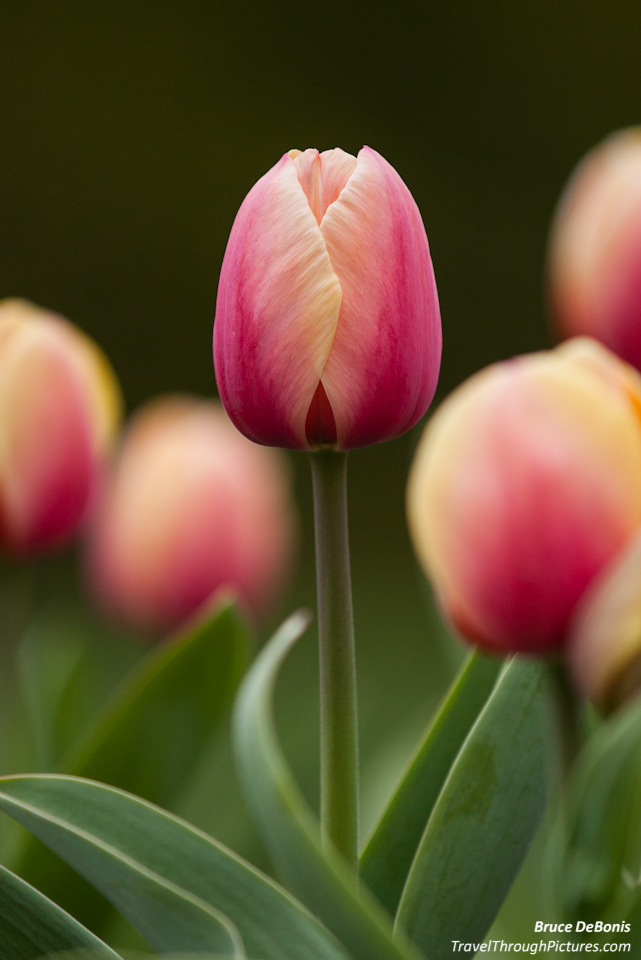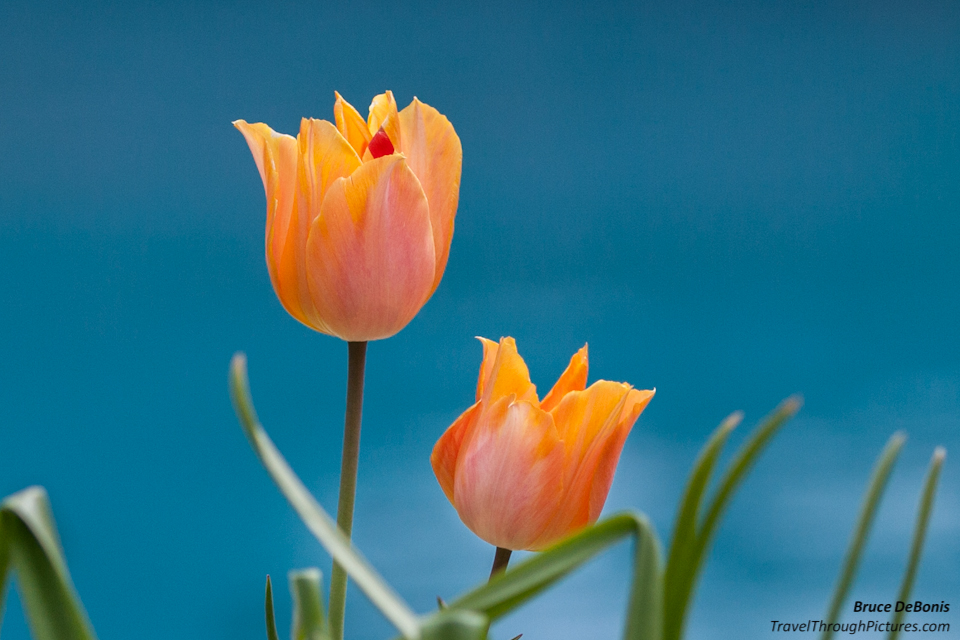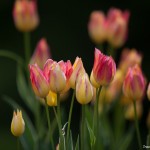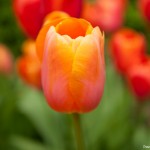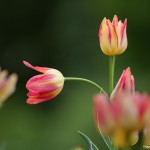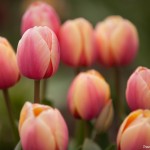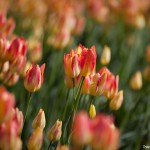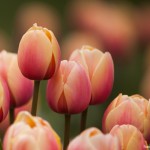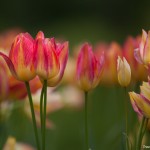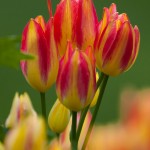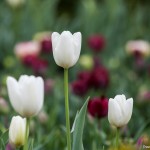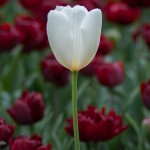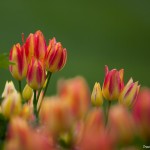Pretty Tulips
Here is a collection of tulips I shot over the last few years. Most were with my current Canon 5D Mk II, a truly amazing camera, but a few were with my first DSLR, a Canon XTi.
Watch Your Background
Think about what is behind your subject before you push the shutter. I like a homogenous, single color background that is out of focus. Finding a single color background requires you to get down on your knees, waddle around, and take the perspective of the camera. Backgrounds may look busy and awful, but you only need a few square feet of smoothness behind your flower to work. The only way to find out, is dirty your knees.
For blurring your background, there are two ways to do it:
- Choose an angle that puts the background far away; and,
- Decrease your depth of field (DOF), how much is in focus in front and behind your focus point, by opening your lens aperture all the way (smaller f/number)
To better understand DOF and blurry backgrounds, click here.
The tulips above with the really cool blue background are actually in front of a swimming pool. They kinda look like they are in an aquarium. I had to be very careful to make sure there were no ripples on the water, odd reflections, or pool stripes running through my frame, but being patient and moving around inch by inch paid off with a nice, smooth blue.
Examples of different DOF from different aperture settings: the first at f/2.8 (more open), and the second at f/5. I chose f/5 here as this is about as open an aperture you can get with most inexpensive lenses at full zoom. If you have one of these lenses, you should shoot a bit wider angle on your lens (less zoom) and that should allow for a wider aperture and a bit more blur. It is a simple reality, that if you want a really wide lens like a f/2.8 and it holds this 2.8 over the length of the zoom, you have to pay big bucks. Sorry, but that is just the way it is.
Examples of different DOF from different aperture settings: the first at f/2.8 (more open), and the second at f/10. I chose f/10 as most lenses can go this narrow. If you go more narrow than f/10 to a larger number, you can actually begin to loose sharpness from diffraction effects.
Focus Tips
When using an open aperture (small f/number) like f/2.8, the DOF is really shallow and can be less than an inch at times (it changes with focal length). An open aperture is great for blurring backgrounds, but can make focusing a real challenge. The trick is to focus on something inside the flower and not the leading, closest point.
If your DOF is say one inch and you focus on the leading flower petal, then only ½” back from that focus point will be in focus and the 1/2″ in front is wasted as it is sitting in space. So, I go ahead and focus on that nearest point, and then move my body and camera closer thus moving the focus point into the interior of the flower. I now am using the full 1″ of in-focus space on the flower. The only way you can do this is to decouple the shutter button from focusing otherwise your camera will re-focus on you. I decoupled the shutter button from focusing by using the Canon menu system and turned on a button on the back of the camera for focusing. This is all part of my standard camera setup.
Post Processing Notes
The tulips taken with my old Canon XTi and EF-S 17-55mm f/2.8 USM lens produced a dull image when compared to my newer, superior equipment. So, I really had to tweak ‘em up in LightRoom 4. I increased the contrast by quite a large amount to make them pop, dropped down the exposure a tad to take down some brightness and richen up the colors, and made various other small adjustments. In the cases of white or light flowers, I had to remove chromatic aberrations (purple fringes).
The Canon EF-S 17-55mm f/2.8 USM that used with my old XTi, was praised as a great lens but I am not so sure. It always gave me tons of chromatic aberrations – purple fringes around light edges. Good thing LightRoom 4 does a really great job of removing this with just a click. I no longer own this camera or lens.
The Equipment:
- Canon 5D Mk II with a Canon 70-200mm L f/2.8 IS II
- Canon XTi with a Canon EF-S 17-55mm f/2.8 USM

